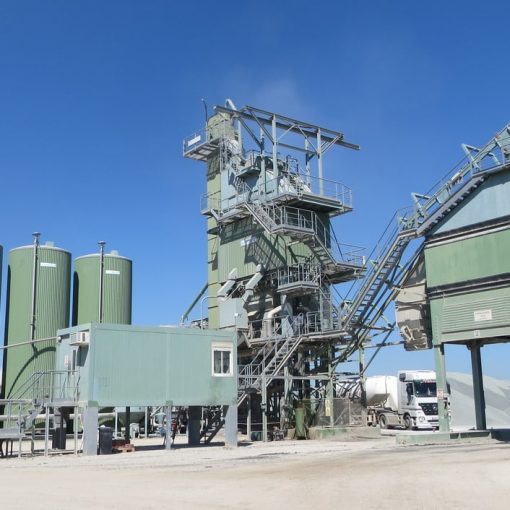FROM WHAT DOES THE LIFE OF ASPHALT DEPEND ON?
What does the life of the asphalt depend on? The service life of the asphalt road depends on the adhesion between the bitumen and the aggregate and is a result of the ability of the bitumen to withstand static and dynamic stresses caused by traffic and the action of atmospheric influences such as air, light and water. However, traffic and atmospheric influences will affect the duration of the asphalt, so that over time there will be physical and chemical transformations, deformations and cracks.
Asphalt consists mainly of aggregates (between 90% and 97%) and bitumen as a binder (from 3% to 10%)
The choice of aggregate mostly depends on the technical requirements that the asphalt layer must have. Chemically, aggregates can be acidic (eruptive) and alkaline (calcareous). Sour aggregates are characterized by a high content of silicon, while basic ones contain carbonates. When aggregates are acidic, they tend to attract negative charges to the surface layer, and when alkaline, they attract positive charges.
Another major component of asphalt is bitumen, which is used in many sectors of the road industry due to its adhesive properties. Bitumen is a complex mixture of chemicals, characterized by the presence of low-polarity molecules. The adhesive properties of bitumen are closely related to the presence of acid groups. High acidity bitumen is better than neutral bitumen because it is “sticky”
Bitumen has a low chemical affinity (tendency to merge) with aggregates, while aggregates have a high affinity for water. Therefore, the adhesion or adhesion of bitumen can be seriously compromised by the presence of water on the surface of the aggregate. The presence of water at the boundary between bitumen and aggregates is the main reason for the formation of holes and the appearance of cracks and deformation of roads.
Ability of bitumen to completely cover the aggregates
The ability of bitumen to completely cover the aggregates is an important feature that affects the life of the asphalt, i.e the longevity of the road. Bitumen is a very viscous material and has a very low chemical affinity with the surface of the aggregate. To solve this problem, it is necessary
- To reduce the viscosity of bitumen by heating
- To mix vigorously using a large amount of mechanical energy.
During this phase, moisture or dirt present on the surface of the aggregates may lead to incomplete coverage of the aggregate itself.
Removal resistance (of bitumen) – “Stripping resistance”
The term “stripping resistance” refers to the ability of bitumen to remain attached to the surface of the aggregate. Good adhesion between the bituminous film and the aggregate surface is necessary for durable bituminous soil. The presence of water between the bitumen and the aggregate will lead to the appearance of removal (rinsing), more precisely to the separation of the bituminous film that covers the aggregates. Removal is manifested as the loss of a small amount of stones from the asphalt surface, which leads to the formation of holes and the appearance of cracks and deformations. Solving this problem increases the service life of asphalt.
Activator that increases the affinity.
The affinity between bitumen and aggregates can be improved by adding a small amount of activator FO. This chemical has the function of changing the surface tension between bitumen and aggregates.
The contact angle is a measure of the interaction between the bitumen and the aggregates
The wide contact angle means that it is very difficult for the bitumen to completely cover the surface of the aggregate. In that case, the so-called micro-mechanical adhesion is not obtained, because the bitumen can not penetrate through the small pores and cracks present on the surface of the aggregate, or the adhesion is disabled due to micro dust particles present on the surface.
Adding activator FO reduces the contact angle between the bitumen and the aggregate. The smaller contact angle favors the adhesion of bitumen to the surface of the aggregate, facilitates the moisture of small parts and facilitates the entry of bitumen into the microscopic pores present on the surface of the aggregate.
This activator also helps prevent bitumen from being “removed” from the surface of the aggregate. The long molecules of the substance formed by the activator FO have a certain chemical structure that is characterized by a group of heads and a group of tails. Bitumen additives rapidly make contact between bitumen and aggregates. The hydrophilic groups of heads are firmly attached to the stone aggregates, and the hydrophobic tails are anchored in the bitumen. This creates a chemical bond between the bitumen and the aggregate. The FO actuator acts as a bridge between the bitumen and the aggregate, ensuring optimal and permanent bonding.
So, the quality and life of the asphalt is something that can be influenced. EU companies involved in the construction and maintenance of roads use this activator on a large scale. Roads are longer and thus great savings are achieved in road maintenance.






